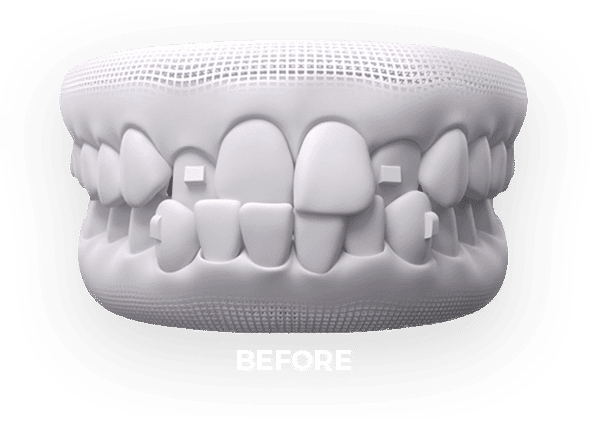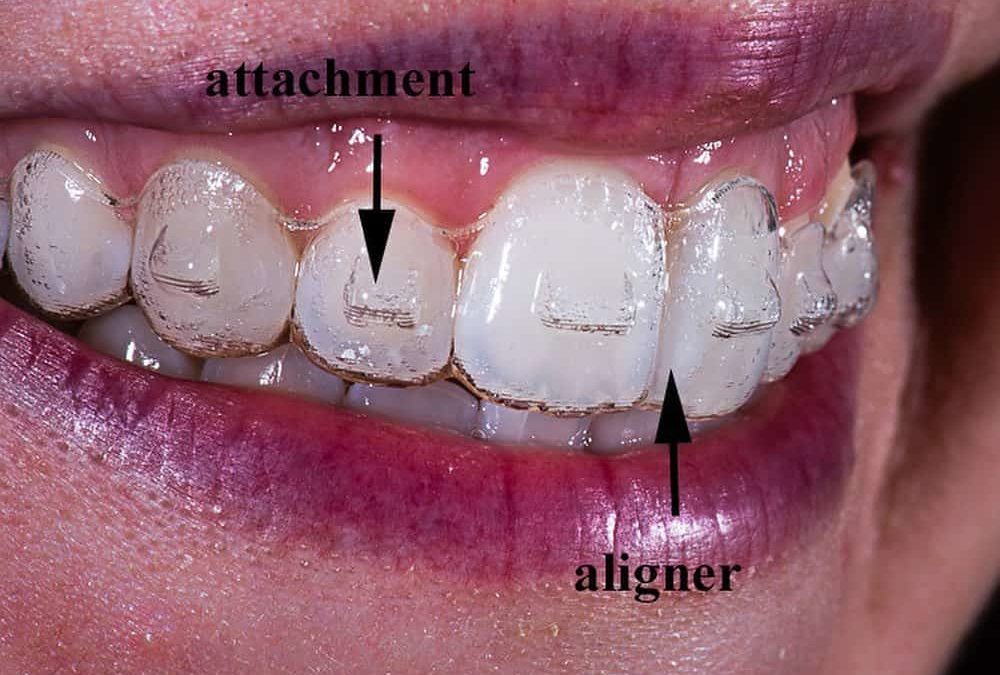Discover the Benefits of Invisalign for a Perfect Smile Makeover
Discover the Benefits of Invisalign for a Perfect Smile Makeover
Blog Article
Invisalign vs. Conventional Braces: Which Alternative Is Right for You?
When taking into consideration orthodontic treatment, the choice in between Invisalign and standard braces offers a number of crucial elements that warrant cautious examination. Invisalign supplies a discreet option with detachable aligners, while typical dental braces offer a much more visible yet efficient remedy for extreme imbalance. Each option encompasses distinct benefits and disadvantages associated with aesthetics, convenience, therapy period, and cost. Comprehending these subtleties is crucial for making a notified decision that lines up with your personal choices and way of living. The concern continues to be: which option will best fulfill your orthodontic needs and expectations?
Introduction of Therapy Alternatives

In comparison, conventional braces include metal braces and cords that are bonded to the teeth. This method uses continual stress gradually to attain alignment. While effective for intricate orthodontic problems, conventional dental braces call for regular brows through for adjustments and can present difficulties in maintaining oral hygiene because of the difficulty of cleaning up about braces and cables.
Both choices have their benefits, and the option usually depends upon specific oral problems, way of life preferences, and person conformity. Inevitably, consulting an orthodontic specialist is crucial for determining one of the most appropriate therapy plan customized to private needs. Comprehending the nuances of each choice can dramatically influence the total success of orthodontic therapy.
Visual Factors To Consider
A considerable factor influencing the choice in between Invisalign and conventional braces is the visual charm each therapy supplies. Invisalign aligners are crafted from clear plastic, making them practically undetectable when used. This discreet look is especially attracting grownups and teens that might feel uneasy regarding their orthodontic treatment. The ability to maintain a natural smile throughout the placement procedure can significantly enhance the patient's self-confidence in specialist and social setups.
In contrast, conventional braces include steel braces and cords, which can be more noticeable. While improvements in orthodontic modern technology have actually brought about the growth of smaller braces and tinted elastics, typical dental braces still maintain an even more conspicuous account. For some individuals, the visibility of braces might prevent them from looking for required treatment.
Eventually, the choice between Invisalign and typical dental braces may rest on individual choices relating to appearances. Clients that prioritize discernment frequently lean towards Invisalign, while those that are much less concerned about exposure may select typical braces. Comprehending the aesthetic ramifications of each alternative is vital for making a notified choice that straightens with one's way of living and preferences.
Comfort and Convenience

In regards to ease, Invisalign aligners are removable, enabling clients to enjoy their preferred foods without restriction and preserve ideal oral hygiene. Cleaning and flossing are streamlined, as the aligners can be secured throughout these regimens, whereas traditional braces require careful maneuvering around cables and braces.
Additionally, Invisalign's progressive system enables fewer orthodontic brows through. Clients typically obtain numerous collections of aligners at once, which can simplify the therapy process and decrease time spent in the orthodontist's chair. In contrast, standard dental braces necessitate normal changes, making them much less hassle-free for those with busy schedules. Invisalign. Overall, the comfort and ease of Invisalign make it an appealing choice for several people seeking orthodontic treatment.
Therapy Duration and Efficiency
While both Invisalign and conventional dental braces work in remedying oral imbalances, the duration of therapy can differ significantly between both options. Commonly, Invisalign treatment can take anywhere from 12 to 18 months, depending on the intricacy of the situation. The clear aligners function by gradually shifting teeth right into their wanted settings, and routine follow-ups with an orthodontist help guarantee development continues to be on track.
On the other hand, standard dental braces often need a longer commitment, generally varying from 18 months to 3 years. This is due to their set nature and making use of brackets and cables, which can be extra effective for complex cases and serious misalignments (Invisalign). The therapy performance of typical dental braces is well-documented, as they permit precise adjustments and higher control over tooth motion
Inevitably, the selection in between Invisalign and traditional braces may pivot on both the awaited therapy Get the facts period and the particular oral issues available. Consulting with an orthodontist is important, as they can provide tailored referrals based upon private needs, making sure the selected method lines up with wanted end results and durations.
Price Comparison and Insurance Policy Alternatives
Cost plays a substantial function in the decision-making process for individuals thinking about wikipedia reference orthodontic therapy, whether choosing Invisalign or standard braces. Typically, the expense of Invisalign ranges from $3,000 to $8,000, while conventional braces commonly cost between $2,000 and $6,000. Aspects influencing these prices include the intricacy of the case, the duration of treatment, and geographical area.
Insurance protection can dramatically influence out-of-pocket costs. Many oral insurance strategies offer partial coverage for orthodontic therapies, however the specifics can vary widely. It is critical for patients to examine their insurance coverage to identify the degree of coverage for either option. Usually, traditional braces might be a lot more regularly covered by insurance coverage plans contrasted to Invisalign, which some insurance companies classify as an aesthetic treatment.
Additionally, a number of orthodontic techniques offer versatile layaway plan, making both treatment choices more accessible. People ought to ask about potential financing choices and discounts for in advance settlements. Examining the overall cost, consisting of insurance benefits and layaway plan, is important for making a notified decision that aligns with both visual preferences and spending plan considerations.

Verdict
In recap, the option in between Invisalign and conventional braces rests on numerous elements, consisting of aesthetic preferences, convenience, therapy period, and cost. Invisalign provides a very discreet, removable alternative that helps with dental hygiene and dietary adaptability, while conventional dental braces might be preferable for complex dental problems and often come with a lower cost factor. Inevitably, examination with an orthodontist is vital to examine specific situations and figure out the most appropriate treatment choice for achieving ideal dental positioning.
When considering orthodontic therapy, the selection in between Invisalign and conventional braces offers a number of vital variables that merit careful analysis.Comparing Invisalign and traditional dental braces discloses distinctive treatment alternatives for orthodontic adjustment.While both Invisalign and standard braces are efficient in remedying oral imbalances, the period of therapy can differ dramatically in between the two alternatives.Price plays a significant role in the decision-making procedure for individuals taking into consideration orthodontic therapy, whether choosing for Invisalign or typical dental braces.In recap, the choice in between Invisalign and traditional dental braces pivots on multiple elements, consisting of aesthetic choices, comfort, therapy duration, and cost.
Report this page